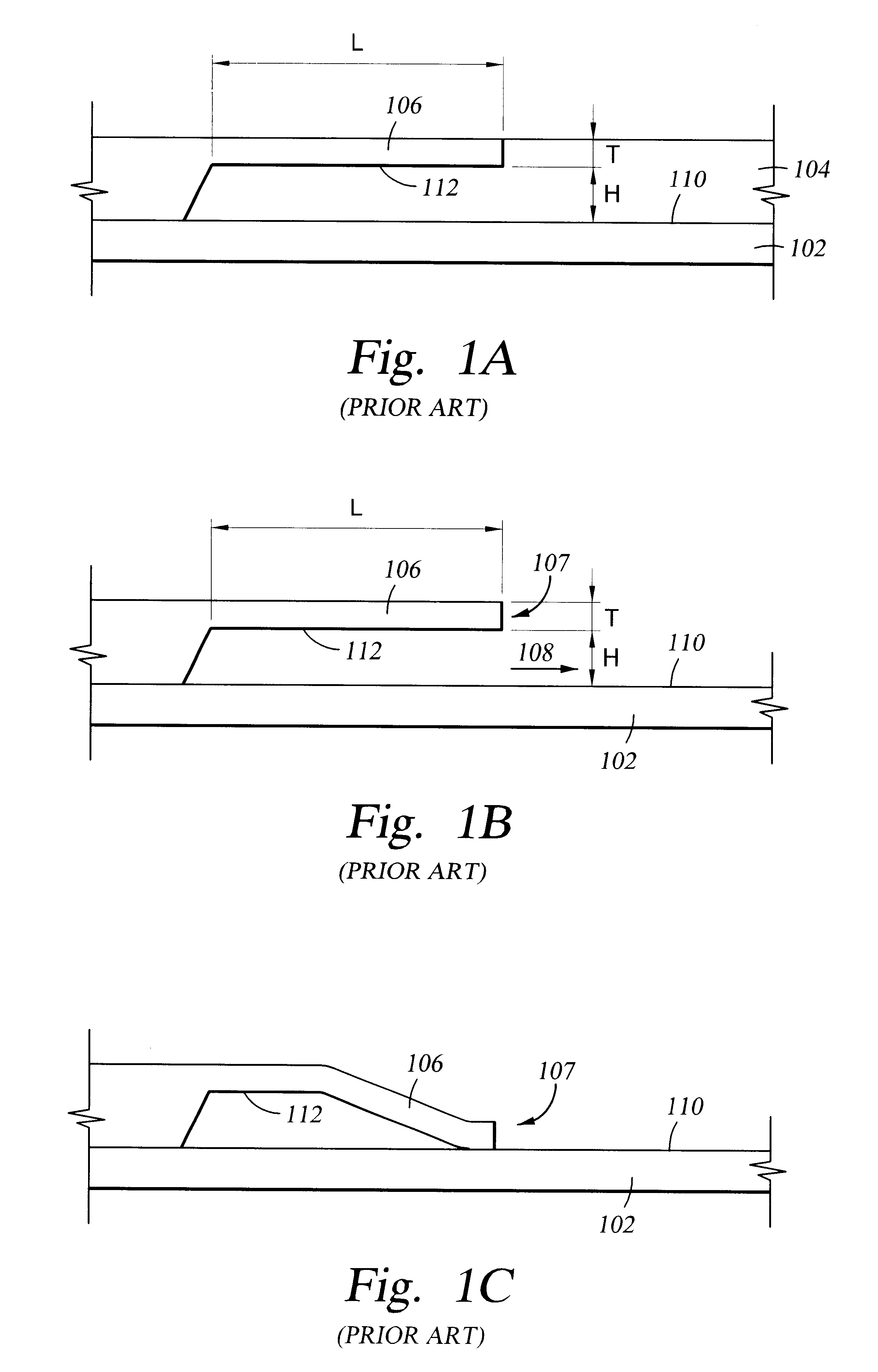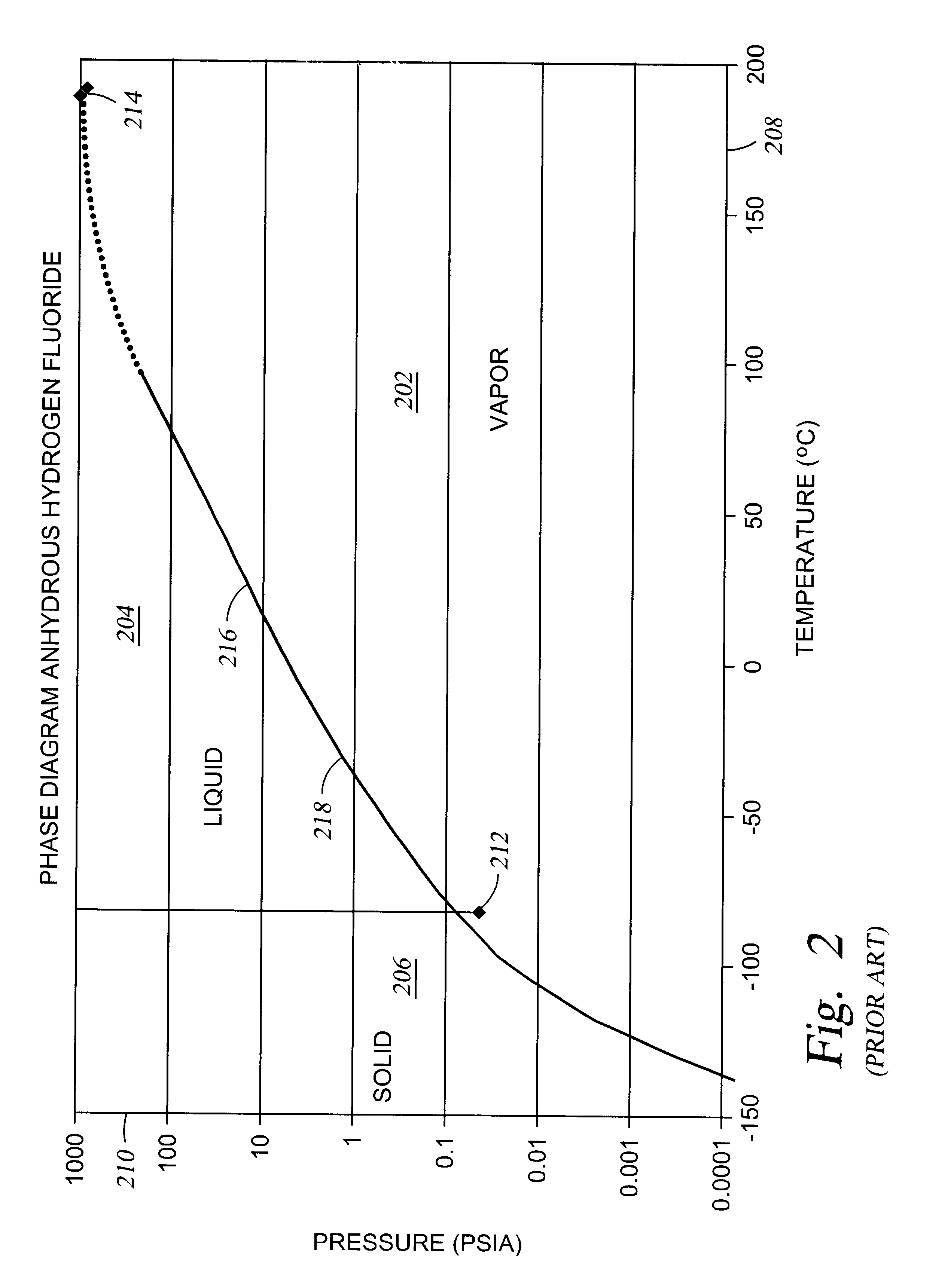Dry etch release of MEMS structures
a technology of mems and etching, applied in the field of micromachining, can solve the problems of stiction, the number one yield limiter, and the deformation of the membrane or diaphragm from its intended position, and achieve the effect of reducing the number of stictions, and reducing the yield of stiction
- Summary
- Abstract
- Description
- Claims
- Application Information
AI Technical Summary
Problems solved by technology
Method used
Image
Examples
example one
Removal of a Silicon Oxide Sacrificial Layer
In one embodiment of the present invention a micromachined polysilicon actuator is fabricated. During fabrication of the actuator, a starting structure of the kind illustrated in FIG. 1A is used to generate a lever arm 107 of the kind shown in FIG. 1B. The actuator includes an actuation electrical contact pad (not shown). With respect to the FIG. 1A starting structure, a first portion of the upper surface 110 of a silicon substrate 102 is in contact with an overlying layer of silicon oxide 104, while a second portion of the upper surface 110 is in contact with a layer 106 of polysilicon. A portion of the bottom surface 112 of polysilicon layer 106 is also in contact with silicon oxide layer 104, in the area where silicon oxide layer 104 overlies silicon substrate 102, so that polysilicon layer 106 extends over the upper surface 110 of silicon substrate 102. Silicon oxide layer 104 then fills a gap having a height "h", between the upper sur...
example two
Application of a SAM
Depending on the device and the end-use application, it may be desirable to use a subsequent surface passivation treatment, such as an ammonium fluoride treatment and / or to apply a coating over the substrate which will prevent stiction during handling and use of the device. Self Assembling Monolayer (SAM) coatings are known in the art. One of the more advantageous SAMs is the coating described in U.S. Pat. No. 5,403,665, the subject matter of which is hereby incorporated by reference in its entirety. In particular, the exposed polysilicon, silicon, or silicon nitride surfaces are exposed to an oxidant. Oxidation methods known to those skilled in the art are applicable, and may be carried out in the same process chamber as that used for the etch / clean cycle steps. After exposure to an oxidant, the exposed surfaces are contacted with vapor-phase alkylsilane-containing molecules. Alkylhalosilane reagents such as alkylchlorosilane perform particularly well. Specific ...
PUM
| Property | Measurement | Unit |
|---|---|---|
| volume % | aaaaa | aaaaa |
| temperature | aaaaa | aaaaa |
| temperature | aaaaa | aaaaa |
Abstract
Description
Claims
Application Information
 Login to View More
Login to View More - R&D
- Intellectual Property
- Life Sciences
- Materials
- Tech Scout
- Unparalleled Data Quality
- Higher Quality Content
- 60% Fewer Hallucinations
Browse by: Latest US Patents, China's latest patents, Technical Efficacy Thesaurus, Application Domain, Technology Topic, Popular Technical Reports.
© 2025 PatSnap. All rights reserved.Legal|Privacy policy|Modern Slavery Act Transparency Statement|Sitemap|About US| Contact US: help@patsnap.com


